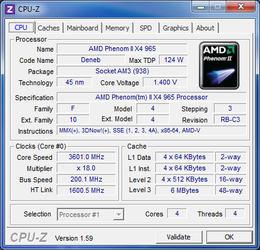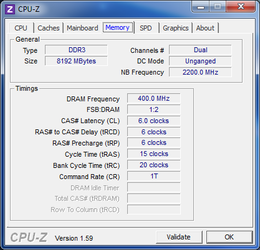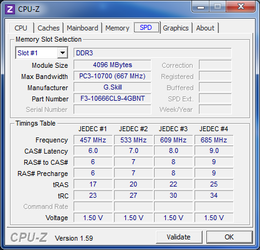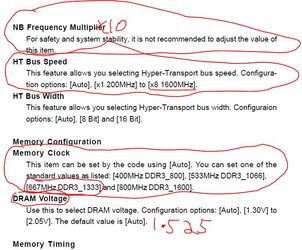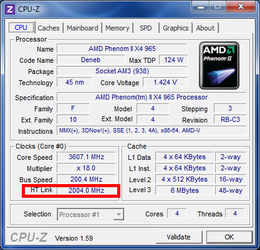So, I upgraded my computer recently, and one of the new parts was a Phenom II x4 965 BE processor. The problem is, I can't seem to get much of an overclock from it. Its stock speed is 3.4 GHz, and the highest I can seem to get it is 3.6 (I have been adjusting the multiplier, not the FSB)
Whenever I go higher, I can run Prime95 for a few minutes, and then it will just close itself, and windows will become all buggy and unstable until I reboot (I have never gotten a BSOD from it, though). I have tried putting the voltage up to 1.475 in the BIOS (although CPU-Z reads it as 1.45, and it reads 1.45 as 1.425, 1.425 as 1.4, and so on and so on). 3.6 GHz seems stable at 1.425 (1.4 according to CPU-Z).
Temps are kind of high (high 30s, low 40s while idling) but CPUTIN has never gone above 58 C on full load, and the core temps have never gone above 54 C.
On a side note, neither AMD cool 'n quiet or C1E seem to work (although I disable them anyway when trying to overclock), no matter what, the multipliers, voltage, and FSB speed always stay the same.
So, can anyone help, please?
Whenever I go higher, I can run Prime95 for a few minutes, and then it will just close itself, and windows will become all buggy and unstable until I reboot (I have never gotten a BSOD from it, though). I have tried putting the voltage up to 1.475 in the BIOS (although CPU-Z reads it as 1.45, and it reads 1.45 as 1.425, 1.425 as 1.4, and so on and so on). 3.6 GHz seems stable at 1.425 (1.4 according to CPU-Z).
Temps are kind of high (high 30s, low 40s while idling) but CPUTIN has never gone above 58 C on full load, and the core temps have never gone above 54 C.
On a side note, neither AMD cool 'n quiet or C1E seem to work (although I disable them anyway when trying to overclock), no matter what, the multipliers, voltage, and FSB speed always stay the same.
So, can anyone help, please?
